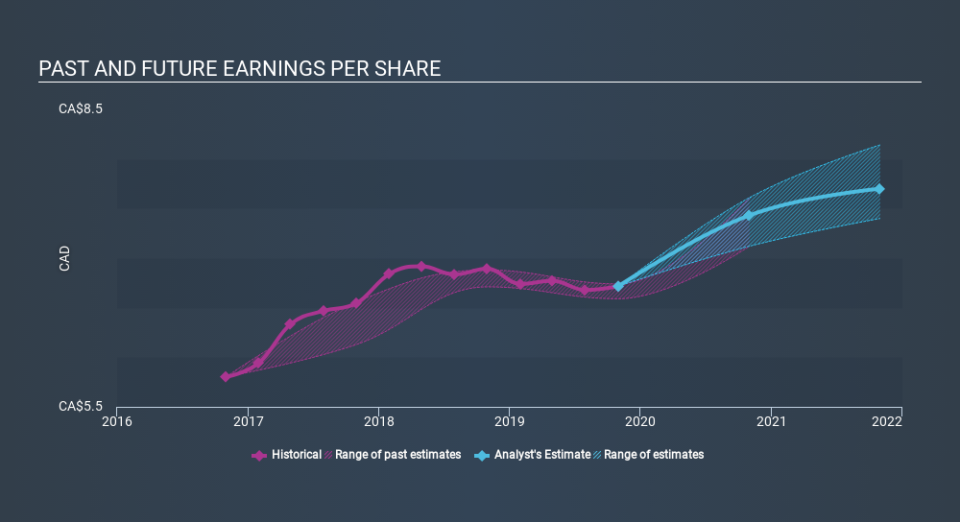The Bank of Nova Scotia (TSE:BNS) Share Price Has Gained 13% And Shareholders Are Hoping For More

When you buy and hold a stock for the long term, you definitely want it to provide a positive return. But more than that, you probably want to see it rise more than the market average. Unfortunately for shareholders, while the The Bank of Nova Scotia (TSE:BNS) share price is up 13% in the last five years, that's less than the market return. But if you include dividends then the return is market-beating. The last year hasn't been great either, with the stock up just 3.7%.
Check out our latest analysis for Bank of Nova Scotia
There is no denying that markets are sometimes efficient, but prices do not always reflect underlying business performance. By comparing earnings per share (EPS) and share price changes over time, we can get a feel for how investor attitudes to a company have morphed over time.
Over half a decade, Bank of Nova Scotia managed to grow its earnings per share at 3.3% a year. This EPS growth is higher than the 2.5% average annual increase in the share price. So one could conclude that the broader market has become more cautious towards the stock. This cautious sentiment is reflected in its (fairly low) P/E ratio of 11.16.
You can see below how EPS has changed over time (discover the exact values by clicking on the image).
We like that insiders have been buying shares in the last twelve months. Even so, future earnings will be far more important to whether current shareholders make money. Dive deeper into the earnings by checking this interactive graph of Bank of Nova Scotia's earnings, revenue and cash flow.
What About Dividends?
As well as measuring the share price return, investors should also consider the total shareholder return (TSR). Whereas the share price return only reflects the change in the share price, the TSR includes the value of dividends (assuming they were reinvested) and the benefit of any discounted capital raising or spin-off. So for companies that pay a generous dividend, the TSR is often a lot higher than the share price return. As it happens, Bank of Nova Scotia's TSR for the last 5 years was 41%, which exceeds the share price return mentioned earlier. This is largely a result of its dividend payments!
A Different Perspective
Bank of Nova Scotia shareholders are up 8.9% for the year (even including dividends) . Unfortunately this falls short of the market return. On the bright side, that's still a gain, and it's actually better than the average return of 7.1% over half a decade This suggests the company might be improving over time. It is all well and good that insiders have been buying shares, but we suggest you check here to see what price insiders were buying at.
If you like to buy stocks alongside management, then you might just love this free list of companies. (Hint: insiders have been buying them).
Please note, the market returns quoted in this article reflect the market weighted average returns of stocks that currently trade on CA exchanges.
If you spot an error that warrants correction, please contact the editor at editorial-team@simplywallst.com. This article by Simply Wall St is general in nature. It does not constitute a recommendation to buy or sell any stock, and does not take account of your objectives, or your financial situation. Simply Wall St has no position in the stocks mentioned.
We aim to bring you long-term focused research analysis driven by fundamental data. Note that our analysis may not factor in the latest price-sensitive company announcements or qualitative material. Thank you for reading.

 Yahoo Finance
Yahoo Finance 
